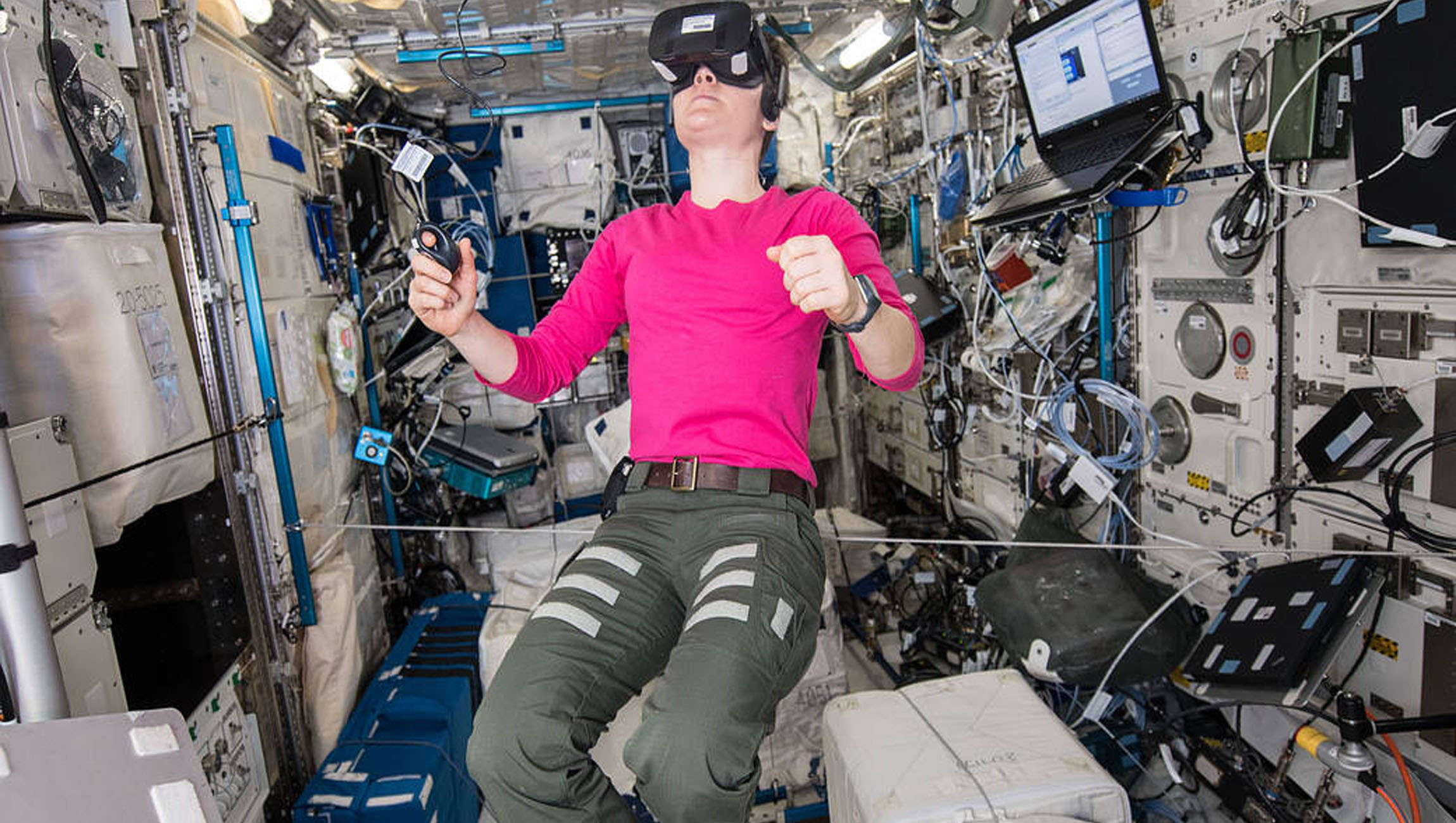Create a free profile to get unlimited access to exclusive videos, sweepstakes, and more!
Far-out gravity suit will keep microgravity from weighing down astronauts’ health

Floating around in zero-G is something most of us who are earthbound can only dream of—it’s as if you suddenly turned into a meta-human who can fly, and the only thing missing is the cape (and spandex). The problem is that microgravity does the opposite of giving anyone superpowers.
The human body was just not made to withstand conditions outside of Earth’s atmosphere. In the vacuum of space, where there is no gravity to hold astronauts down, muscles and bones can atrophy rapidly and eyesight can suffer permanent damage. Where everything floats, so do fluids inside the body. Blood clots and blood rushing to the head can be potentially lethal. Even exercise and the LBNP (lower body negative pressure) chamber on board the ISS can only do so much.
This is why Neeki Ashari and Alan Hargens, two grad students from UC San Diego, created a mobile LBNP intravehicular activity (IVA) suit that can simulate the effects of gravity on the body.
"I wanted to create a fully mobile LBNP device in the form of wearable trousers for astronauts to comfortably wear while applying the LBNP technique," Ashari, who recently published a study with Hargens in Frontiers in Physiology, told SYFY WIRE. "I had a mental image for how the mobile gravity suit looked and behaved. I knew the behavior of the suit would be analogous to an accordion-like mechanism (axial contraction).I wanted the suit to have its own custom portable vacuum system, pressure/thermal control system, and safety-shut off system—all while being fully mobile. No one had ever done that before."
LPNP works against fluid fighting to get to your head and also generates ground-reaction forces (GRFs) that simulate the weight you feel when gravity is pulling you down on Earth. Negative pressure applied to the lower body is the most effective way to provide the resistance we usually get form gravity and drastically lower the health risks associated with weightlessness. The negative pressure generated by the suit prevents extra fluids from going upwards and keeps them where they are supposed to be, as gravity would on terra firma.
As opposed to the bulky LBNP chamber currently in use on the ISS, the flexible and untethered LBNP suit developed by the researchers allows for free movement and can even come off with a click in case of emergency. The GRFs it exerts onto the body counter the nearly nonexistent gravity in space by preventing bone and muscle loss. This is a suit designed for intravehicular activity (IVA), but could it ever be transitioned to an EVA (extravehicular activity) suit? There might not be a need.
"We’re more concerned about the journey to Mars as it will be entirely in microgravity. Upon arrival, astronauts will be introduced to about 38% of Earth’s gravity on Mars," Ashari said. "Surely, astronauts can wear the mobile gravity suit inside their habitable pods on Mars when exploring the terrain. Additionally, they can use the mobile gravity suit for prolonged stays in a moon habitat that has
only a sixth of the gravity we experience on Earth.”
Wearing such a suit will also give astronauts more time to actually carry out experiments instead of wasting several hours lying still in a chamber or walking on a treadmill. No matter how much time is dedicated to exercise in microgravity, it still only generates a quarter to a third of the GRFs on Earth. The aRED (advanced resistive exercise device) on the ISS is a vast improvement over that, but still wastes too much crew time.
“This suit is not meant to be worn 24/7. We suggest using the suit for about 6-8 hours per day, which is about how much time we spend upright on Earth," Ashari explained. "This loading and unloading effect is what we’re trying to simulate. It’s what we experience everyday on Earth. We sleep horizontally (axial unloading) during the night, then stand upright (axial loading) and go about our daily activities. Then we do it all over again each day. Those changes are what strengthen our musculoskeletal and cardiovascular systems. We hope that 6-8 hours a day of usage will greatly reduce the adverse effects of microgravity on the musculoskeletal and cardiovascular systems.”
The gravity suit looks like a futuristic pair of overalls. It has an outer membrane made of HyproTex fabric that contradicts itself in the best possible way by being both breathable and airtight, which maintains comfortable temperature and humidity levels while retaining pressure. On the inside, the suit is supported by rings of polyethylene tubing held together by a strong adhesive fabric. This way, the suit stays flexible without clinging to the body. Its portable vaccum system, made out of a brushless fan and high-powered motor, is what amps up the negative pressure.The feet are Crocs. Yes, Crocs. They have the ideal stability for this kind of thing, proving that sometimes, the strangest objects can have added benefits in space. There is also time for upgrades is they end up being necessary.
"Battery life will definitely need to be upgraded to something that lasts long enough for a daily session. Also, we don’t know yet how comfortable the suit will be for 6-8 hours or the exact negative pressures needed to reproduce
normal daily loading of the musculoskeletal and cardiovascular systems,” said Ashari.
This could have an astronomical impact on future missions to the Moon and deep space. If astronauts don’t have to take any additional time out for gravity simulations, they will be able to focus on science, and who knows what they might find out.



























